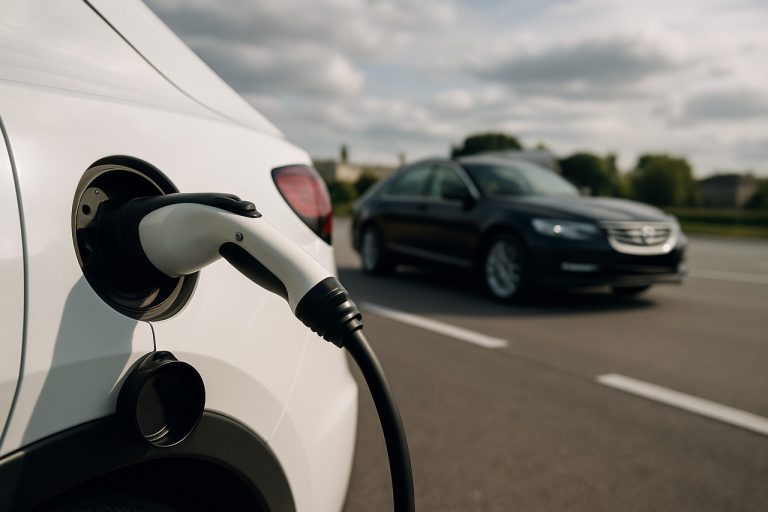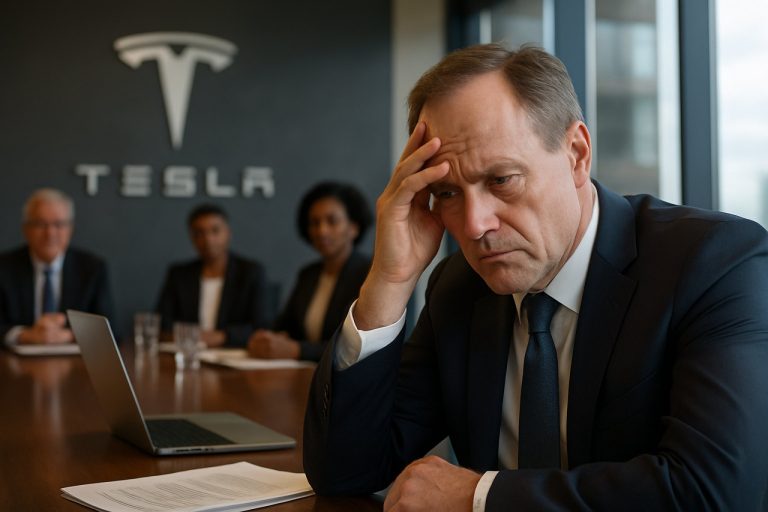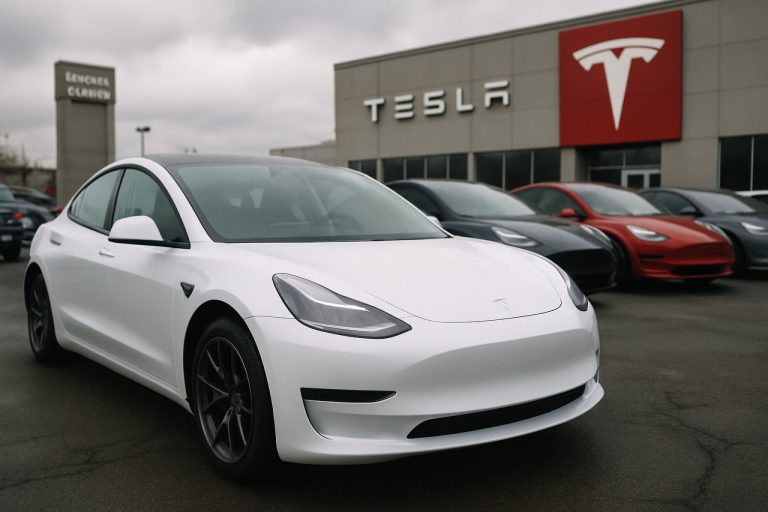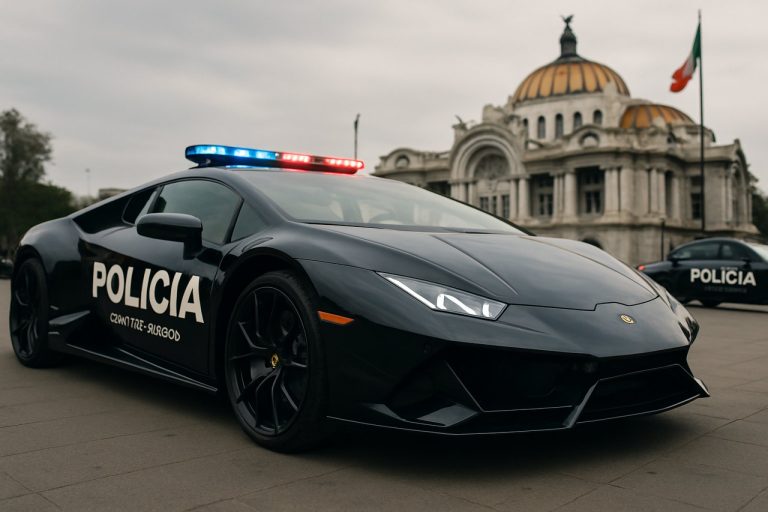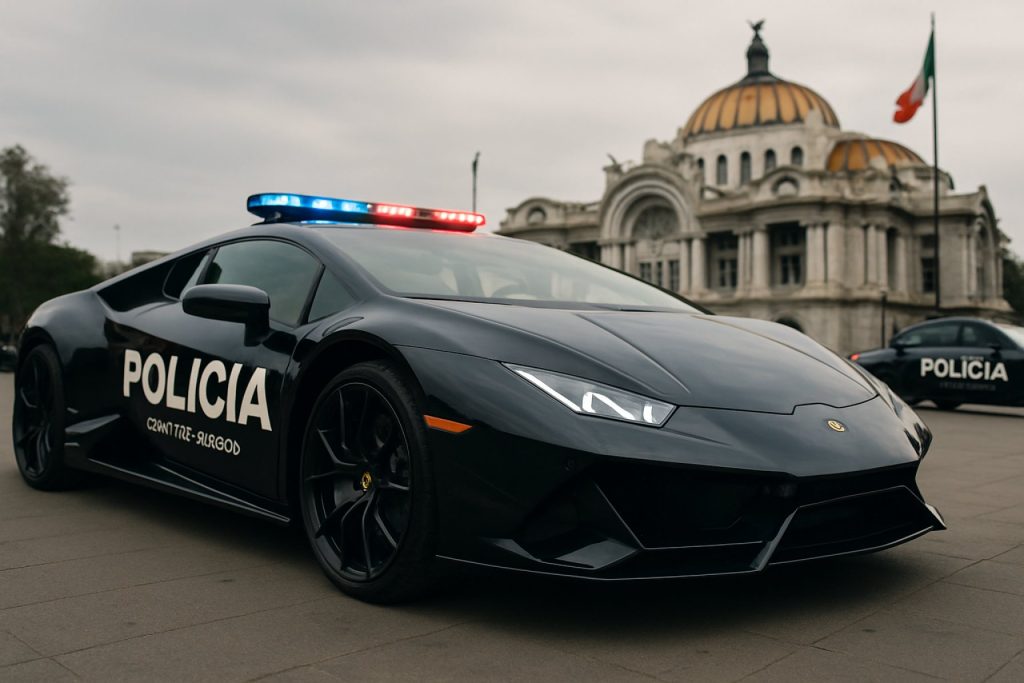
- Jalisco, Mexico has introduced Tesla Cybertrucks and Black Mamba armored vehicles into its police fleet ahead of the 2026 FIFA World Cup, aiming to enhance public security and modernity.
- The government is investing nearly $50 million in a high-tech fleet, including 678 new vehicles equipped with features like Starlink internet and AI-driven surveillance systems.
- The move is part of a broader $309 million “Escudo Jalisco C5i” security strategy, featuring a larger police force, expanded surveillance, and advanced command centers.
- The program’s effectiveness is being debated—praised for innovation, but criticized by some as expensive showmanship without guaranteed results in reducing crime.
- This initiative highlights the tension between visible technological advancement and addressing persistent safety concerns as Jalisco prepares for a global audience.
Jet-black, wedge-shaped and unmistakably futuristic, three Tesla Cybertrucks now course through the streets of Jalisco, Mexico, flanked by hulking armored “Black Mamba” vehicles. These electrified patrols, gleaming beneath the highland sun, mark a dramatic new chapter for public security—and set off a debate that pulses far beyond the siren’s wail.
With the 2026 FIFA World Cup poised to shatter visitor records, Jalisco’s government is spending nearly $50 million to transform its police fleet, determined to deliver both real safety and an undeniable aura of modernity. The upgrades include 678 new vehicles—an arsenal that projects security, but also captures the world’s imagination.
Spectacle or Substance?
Governor Pablo Lemus Navarro orchestrated this massive investment, emphasizing the need to reshape perception and readiness alike. Black Mamba Sandcats, described by officials as “sort of like tanks,” now bolster the line alongside the notorious Cybertrucks. The vehicles aren’t just for show: they’re slated to serve as mobile command hubs, enhanced with SpaceX’s Starlink internet connectivity and AI-driven surveillance to monitor, deter and respond to threats across key World Cup sites.
Yet as the U.S. Embassy lauds Jalisco’s “bold step toward innovation,” a homegrown storm brews. Critics within the ruling Morena party ridicule the RoboCop-style spectacle, deriding the splashy fleet as a misplaced indulgence in high-tech theatrics while local safety remains fragile. Congressional voices demand transparency, questioning how Cybertrucks—whose Mexican list price starts around $100,000—will translate to actual progress against crime.
Modern Hardware, Old Questions
Jalisco’s move comes as Tesla grapples with persistent scrutiny. The Cybertruck, less than two years on the market, has already been recalled eight times by U.S. safety agencies, most recently for trim issues that could compromise security. (Elon Musk’s ambitious Mexican gigafactory, meanwhile, languishes in development limbo.) Nevertheless, state officials maintain that a competitive, nationwide bidding process governed the acquisition, aiming to balance innovation and public accountability.
The new fleet is part of a sweeping “Escudo Jalisco C5i” ($309 million over six years), set to deploy 4,500 security personnel and vastly expand surveillance across urban and rural hot spots. High-tech license plate readers and advanced command centers are designed to keep pace with the expected five million visitors pouring into Zapopan, Guadalajara, and iconic tourist hubs like Tequila.
The Takeaway
Jalisco’s electrified police vans pose a question that reverberates throughout Mexico and far beyond: Can engineering dazzle truly translate into safer streets—or is it a distracting spectacle in a nation wrestling with deeper security challenges?
As the world tunes in for the World Cup spectacle, every patrol—electric or not—will stand as a rolling symbol of Mexico’s race to secure both its stadiums and its global reputation. In an era where technology and trust must move in tandem, the real show may unfold long after the final whistle.
Will Tesla Cybertrucks Transform Policing or Just Steal the Spotlight at the World Cup?
Introduction
Jalisco, Mexico’s recent $50 million investment in Tesla Cybertrucks and Black Mamba armored vehicles ahead of the 2026 FIFA World Cup has sent shockwaves through the law enforcement and automotive industries alike. As these futuristic vehicles join the police fleet—outfitted with cutting-edge surveillance and SpaceX Starlink connectivity—the world is asking: Will this drive real change or just generate headlines? Let’s dig into lesser-known facts and insights about this bold experiment.
Facts & Features Beyond the Headlines
1. Tesla Cybertruck in Law Enforcement: A Rare Move
– Law enforcement agencies globally have experimented with electric vehicles, but deploying the cutting-edge Tesla Cybertruck for active patrol is unprecedented at this scale.
– Cybertrucks benefit from advanced all-wheel-drive systems, instant torque for high-speed pursuits, and robust stainless steel exoskeletons for enhanced officer safety (source: Tesla).
2. Full Specs & Pricing Overview
– Estimated base price in Mexico: $100,000+ per unit—pricing can vary with up-armoring and tech upgrades.
– Range: Up to 340 miles (540 km) on a single charge (varies by model and conditions).
– Payload & Towing: Over 3,500 lbs payload, towing up to 11,000 lbs—far exceeding typical police SUVs or pickups.
– Tech Suite: Each truck is set to be equipped with real-time telemetry, dashcams, built-in Starlink for global internet access, and AI-driven surveillance modules.
3. Compatibility and Infrastructure Challenges
– Charging grids in Jalisco and Mexico at large are less developed than in the US or Europe. For continuous patrol, the state must rapidly expand DC fast-charging infrastructure and on-the-go maintenance logistics.
– Cybertruck’s size may limit maneuverability in dense urban areas (Guadalajara’s historic core, for instance), potentially necessitating mixed fleet deployment.
How-To: Adopting Electric Armored Vehicles for Public Safety
– Step 1: Assess urban vs. rural patrol routes for sufficient charging access and vehicle range.
– Step 2: Train officers not just in EV driving, but also in rapid problem-solving around electric and high-tech systems.
– Step 3: Integrate real-time monitoring and data analytics platforms to optimize patrol routes and law enforcement response.
Security, Sustainability & Market Trends
– Sustainability Angle:
Electric fleets can reduce operational emissions by up to 70%, improve air quality, and appeal to climate-conscious residents and tourists (source: International Energy Agency).
– Police Electrification:
According to BloombergNEF, government fleets worldwide are forecasted to increase EV adoption by 25% year-over-year through 2030.
– Armored Vehicle Market:
The global armored vehicle market is expected to reach $34 billion by 2027, fueled in part by growing security needs at major public events.
Controversies & Limitations
– High Cost vs. Local Priorities: Critics argue that funds may be better spent on community policing, officer training, or social initiatives to target root causes of crime.
– Maintenance & Recall Risks: The Tesla Cybertruck has been recalled several times in its short life, including issues with wipers, trim, and software glitches (source: NHTSA.gov). Reliable service network in Mexico is still developing.
– “Spectacle” Argument: There’s concern that the focus on eye-catching tech may overshadow less visible, but more impactful, crime reduction strategies.
Real-World Use Cases & Comparisons
– Comparative Review:
Ford’s all-electric F-150 Lightning (popular with US police agencies) has a longer track record and greater service support, but lacks the “future-forward” aesthetic and perceived intimidation factor of the Cybertruck.
– UAE police have used high-profile supercars for visibility but not as backbone fleet vehicles.
– Early tests in Los Angeles with Model S police cars highlighted long-term cost savings (maintenance, fuel), but also the need for robust charging infrastructure.
Frequently Asked Questions
Q: Are armored Cybertrucks fully bulletproof?
A: While the Cybertruck’s stainless steel body offers substantial durability, full ballistic protection requires additional up-armoring, especially for police use.
Q: Will Starlink internet make a difference?
A: Yes, reliable connectivity enables live video streaming, GPS tracking, and faster coordination—key in crowds and emergency scenarios.
Q: Are there sustainability benefits?
A: Significant reductions in fleet emissions, but overall impact hinges on clean electricity sources and battery end-of-life management.
Q: What if a Cybertruck breaks down?
A: Jalisco will need a dedicated EV service squad; towing and mobile repair for EVs require specialized equipment and training.
Actionable Recommendations & Quick Tips
– For Public Officials:
Conduct independent audits of cost and actual impact after World Cup events; publish transparent data on response times, maintenance costs, and citizen feedback.
– For Law Enforcement:
Invest in officer training for EV handling and AI-driven surveillance best practices.
– For Tourists & Locals:
Download official safety apps and utilize real-time updates provided by the new connected fleet to track safe routes during events.
– For Other Cities:
Consider pilot programs with mixed fleets and incremental tech upgrades to measure results before full-scale adoption.
Conclusion
Jalisco’s Tesla Cybertruck patrols put it on the global stage, offering lessons in high-tech policing, public perception, and the careful balance of spectacle and substance. The world will soon see if this risk pays off with real boosts to safety—or becomes a cautionary tale in public spending.
Explore more about Tesla’s innovations at the official Tesla website, or learn about global patrol vehicle trends at SpaceX and other leading tech providers.
